#Greek coins
Explore tagged Tumblr posts
Text
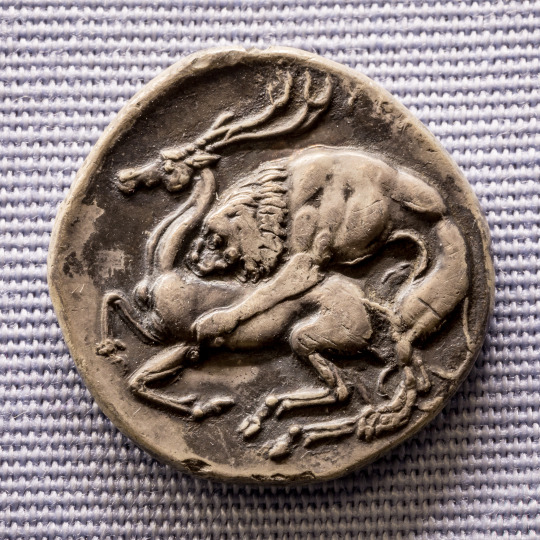
A lion attacks a stag. Reverse of a silver didrachm issued by the polis of Elea in southern Italy between 420 and 380 BCE. The obverse, not shown, bears the head of Athena. Now in the Staatliche Münzsammlung, Munich, Germany. Photo credit: ArchaiOptix/Wikimedia Commons.
#classics#tagamemnon#Ancient Greece#Magna Graecia#Classical Greece#art#art history#ancient art#Greek art#Ancient Greek art#Classical Greek art#coins#ancient coins#Greek coins#Ancient Greek coins#didrachm#numismatics#ancient numismatics#Staatliche Münzsammlung#animal violence tw
786 notes
·
View notes
Text

The kausia was an ancient Macedonian flat hat, commonly worn during the Hellenistic period, possibly even before Alexander the Great’s time. It was part of the royal attire for Macedonian kings, often adorned with a diadem. The hat served both as a symbol of status and practical protection against the sun, used by soldiers and commoners alike. The kausia has been depicted on coins, statues, and frescoes across regions influenced by Macedonian culture. Its design may have inspired similar headgear in modern-day #Afghanistan and #Pakistan, known as the pakol
#kausia #ancientcivilization #egyptology #roma #ancientart #arch #prehistoric #culturalheritage #anthropology #italia #ancientrome #antiquity #ancientcity #neolithic #ologie #roman #romanempire #a #nature #bronzeage #greece #historia #megalithic #arthistory #temple #egyptian #photooftheday #medieval #archaeologicalexcavation #like #ruins
#kausia#history#archaeology#photography#culture#greek coins#travel#roman coins#palestrina#sidon saida tyre beirut phoenician الصديق_الصدوق#الصديق_الصدوق#macedonian
81 notes
·
View notes
Text


Woah! Almost didn't see you there!
This 5th century B.C.E. Athenian obol is less than a centimeter long. An obol was equivalent to one-sixth of a drachma, and was half the price of admission to the theater.
All coins come from the Elizabeth C. Evans Coin Collection at the Linda Lear Center.
#ancient greece#greek coins#history#ancient coins#linda lear center#connecticut college#athens#forbidden snack#big comeback
25 notes
·
View notes
Text
Coin of the Day #271 (1/30/2025)
A Phoenician bronze for today…


Phoenicia
AE16 - 3.67g
146-144 BC
Arados Mint
Obverse Head of Zeus right, laureate
Reverse Phoenician inscription
Prow left
#coin of the day#ancient greece#ancient phoenicia#arados#phoenicia#phoenician#greek coins#phoenician coins#numismatics#coin#coins#ancient coins
7 notes
·
View notes
Text
The Tarsus Medallions
Pictured below is one of the three medallions found in the "Treasure of Tarsus", this one depicting Alexander the Great on the obverse and Alexander on horseback spearing a lion.

The Tarsus medallions were found near the ancient city of, you guessed it, Tarsus in the 19th century and are most likely victory medallions for the winners of Pythian and Olympic games held during imperial visits. The Tarsus examples were probably struck during the Reign of Severus Alexander, who could've participated in a cult surrounding Alexander the Great, hence his depictions on the medallions. From what I've seen there were only 3 of these types found in the treasure, but some sources say 4. French Wikipedia has a medallion of distinctly different style from the Rome mint depicting Severus Alexander that was supposedly found with the other three, but it doesn't really fit in with the others.

Pictured above, obverse depicts a portrait of Alexander (not Herakles apparently) wearing the remains of the Nemean lion with the reverse being the same as the first medallion.

By far my favorite of the three, this one depicts Philip II, the father of Alexander on the obverse, with the reverse depicting victory leading a quadriga.
#ancient coins#ancient rome#ancient art#ancient history#roman art#greek coins#ancient greece#greek mythology
7 notes
·
View notes
Text
The Big Show (Part 2): The Coins
(Sorry for the wait)

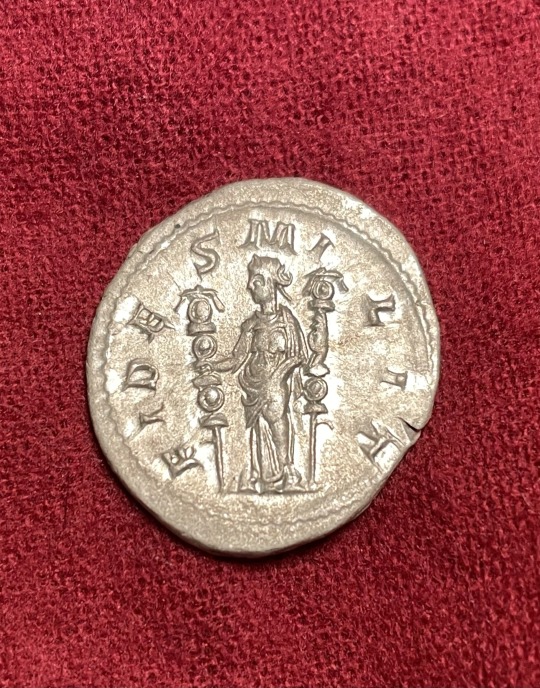
Philip the Arab Bi Antoninianus 244-247 CE Ob: IMP M IVL PHILIPPVS AVG rv: FIDES MILIT "Fidelity to the military" RIC IV Philip I 32 b.


Gallic Empire: Postumus Bi Antoninianus 260-269 CE Ob: IMP C POSTVMVS P F AUV rv. MONETA AVG "the emperor's money" Colonge(?) mint RIC 315.
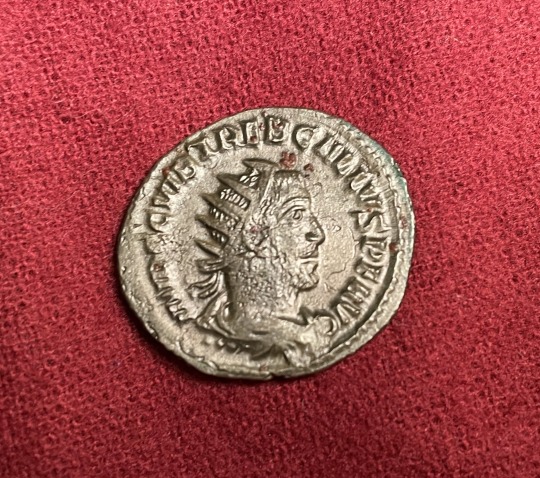

Trebonius Gallus Bi Antoninianus 251-253 CE Ob: IMP C C VIB TREB GALUS PF AVG rv: IVNO MARTIALIS "to Juno, the war-like" Antioch mint RIC IV 83 subtype 6.
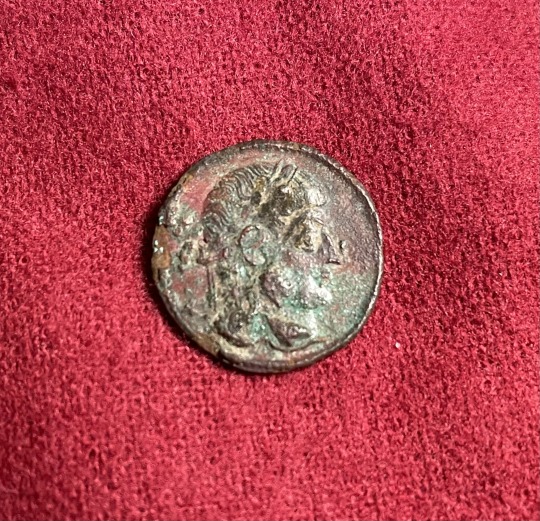
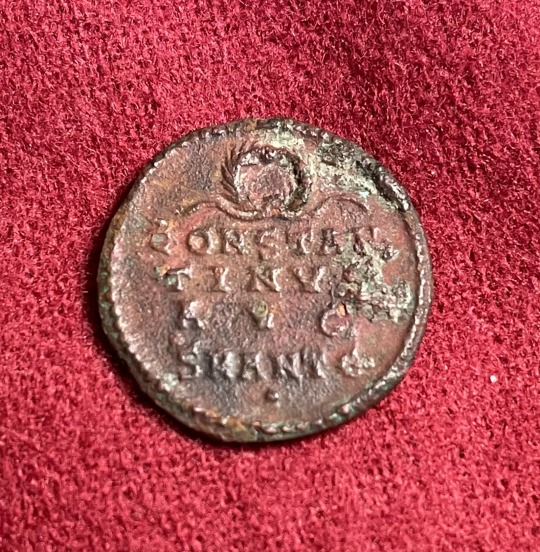
Constantine the Great AE 2/3 Follis 324-325 CE Ob: (Anepigraphic) rv: CONSTAN/TIVS/AVG/SMANTϵ/● Antioch mint, oficina ϵ RIC VII 57.


Caesarea in Cappadocia, Gordian III 241 CE AE Ob: AY K M ANT ΓOPΔIANOC rv: MHTPO(Π)(O) KAIC(A) B N εNTIX/εT Δ "of the metropolis Caesarea, twice neocorate, walled, year 4" RPC VII.2 3351 Counterstamp: head of Helios, radiate, GIC 12i.
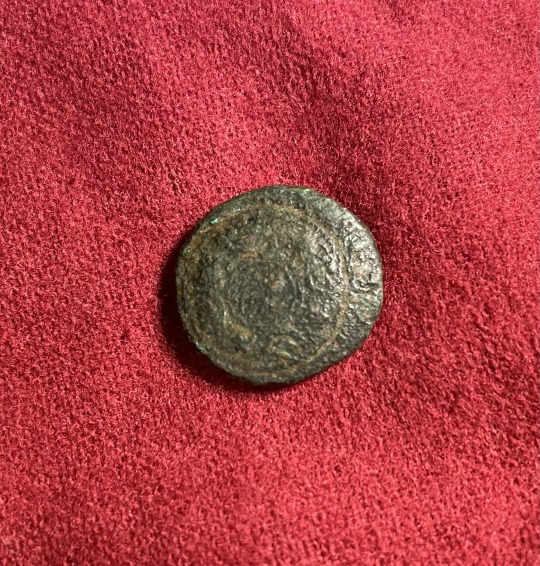

Kingdom of Macedon, Alexander the Great (Postumus) AE Half Unit 325-310 BCE Ob: Macedonian shield rv: Macedonian Helmet flanked by B(AΣIΛEΩΣ) A(ΛEΞANΔPOY) , below, coiled serpent. Price 409.
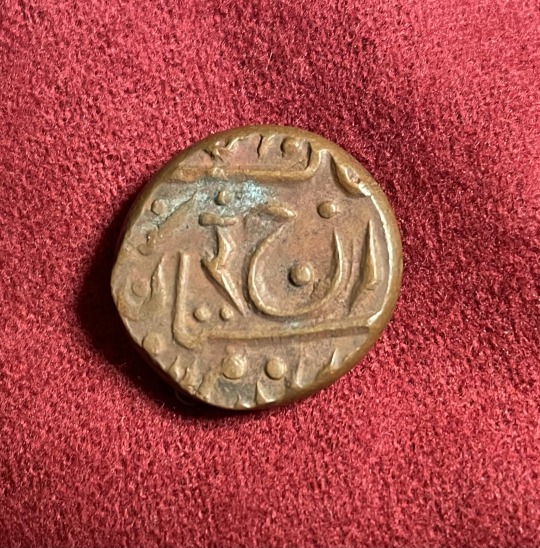

Jodhpur 1/4 Anna, 1939
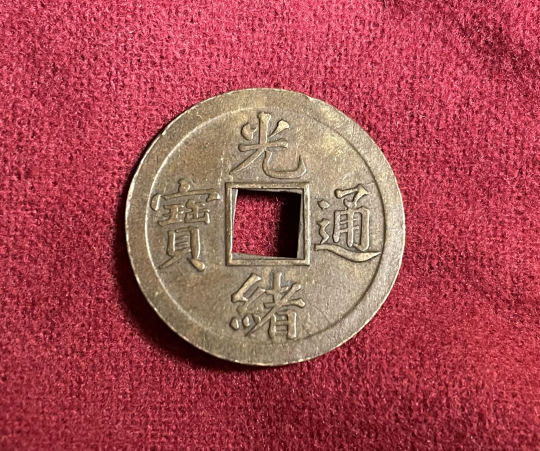
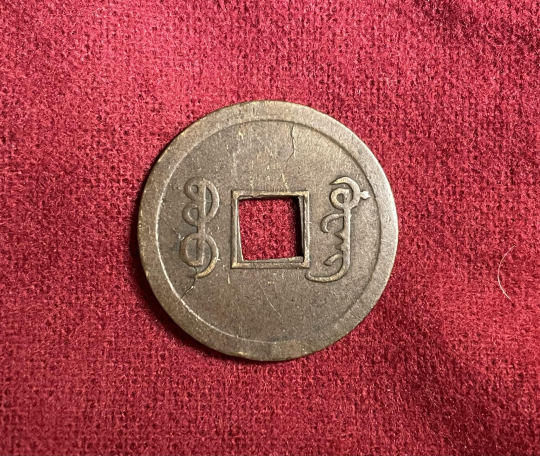
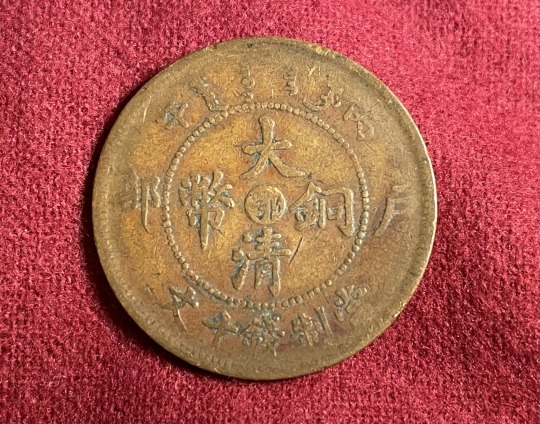
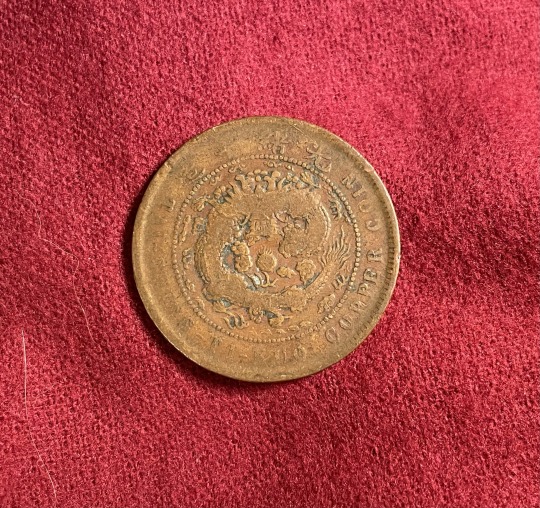
Empire of China Guang Xu Cash style milled/ 5 Cash 1905/6
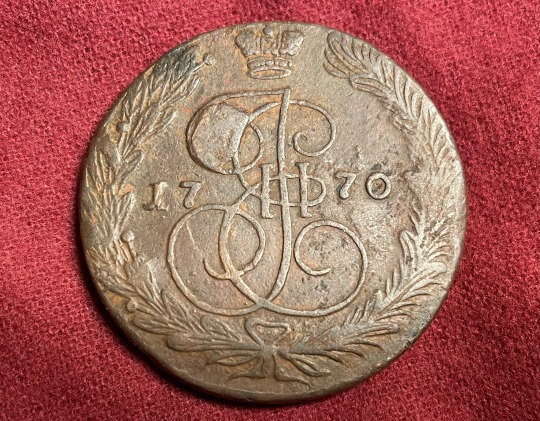
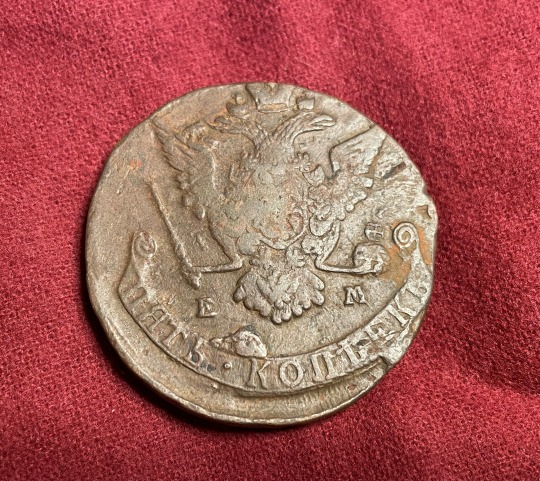
Catherine the Great Russian Empire 1770 5 Kopeks
#ancient coins#numismatics#coins#ancient history#ancient rome#ancient greece#roman coins#greek coins#chinese empire#india#catherine the great#constantine the great#alexander the great#large copper coins
6 notes
·
View notes
Text
When you’re shopping for gifts and find something young you would really want

#greek artifacts#greek vase#greek plates#ancient greece#ancient antiquities#pottery#greek coins#archaeology#scientific explorer#toys
11 notes
·
View notes
Text
Top 10 Best Historical Coins for Collectors
The world of historical coin collecting is a fascinating intersection of art, history, and investment. Each coin carries with it the story of the era it represents, whether it's from ancient civilizations, significant historical events, or minted during the reign of great rulers. Collectors in the luxury niche appreciate historical coins not only for their beauty and rarity but also for their intrinsic value as pieces of world history. In this blog, we explore the top 10 best historical coins for collectors, delving into their backgrounds, rarity, and why they continue to captivate collectors.
1. Athenian Owl Tetradrachm (Circa 440 BC)
The Athenian Owl Tetradrachm is one of the most iconic coins from ancient Greece, recognized by its detailed depiction of an owl, the symbol of Athena, the goddess of wisdom. Minted in silver, this coin was used as currency throughout the ancient Greek world and remains one of the most collectible ancient coins today. Collectors prize the Tetradrachm for its symbolism and craftsmanship. Its strong association with the golden age of Athens and its link to the birthplace of democracy make it a standout in any collection. Depending on its condition, an Athenian Owl Tetradrachm can fetch prices ranging from $1,000 to over $20,000.
2. Roman Denarius of Julius Caesar (Circa 44 BC)
Coins featuring Julius Caesar hold immense historical significance, particularly the Roman Denarius issued during his reign. This coin, minted just before his assassination in 44 BC, features a portrait of Caesar on one side and various Roman symbols on the reverse. It is one of the earliest examples of a living ruler being depicted on currency, marking a critical shift in Roman coinage. Collectors of ancient coins are drawn to the Roman Denarius for its rarity and its direct connection to one of history’s most famous figures. Prices for Julius Caesar Denarii vary but can reach into the tens of thousands of dollars, especially for well-preserved pieces.

3. St. Gaudens Double Eagle (1907-1933)
The St. Gaudens Double Eagle is often regarded as one of the most beautiful coins ever produced by the United States Mint. Designed by the famous sculptor Augustus Saint-Gaudens, the coin features a striking depiction of Lady Liberty striding forward with a torch and an olive branch, symbolizing enlightenment and peace. These $20 gold coins were minted from 1907 to 1933, with certain rare editions, like the 1933 Double Eagle, becoming extremely valuable. One 1933 Double Eagle sold for over $7 million at auction, making it one of the most expensive coins in the world. Collectors appreciate the Double Eagle for its beauty, historical significance, and rarity.
4. Spanish 8 Escudo "Gold Doubloon" (Late 16th to 19th Century)
The Spanish 8 Escudo, also known as the "gold doubloon," is one of the most famous coins from the Age of Exploration. Minted in the Spanish colonies, these large gold coins were used extensively in trade and became synonymous with pirate treasure. Their historical connection to the Spanish Empire, the wealth of the New World, and the era of maritime exploration make them highly sought after by collectors. Gold doubloons are valued based on their condition, minting date, and rarity, with well-preserved examples selling for upwards of $10,000 or more.
5. British Gold Sovereign (1817-Present)
The British Gold Sovereign is one of the longest-running coinage series in history, with its roots stretching back to 1817. Featuring the profile of the reigning British monarch on one side and the iconic image of St. George slaying the dragon on the other, the gold sovereign has remained a symbol of British stability and power. Collectors are particularly interested in rare or early sovereigns, such as those minted during the reign of Queen Victoria or George III. While modern gold sovereigns are still produced today, the older and rarer ones can fetch thousands of dollars at auction, especially those from limited mintages or special issues.
6. Morgan Silver Dollar (1878-1904, 1921)
The Morgan Silver Dollar is an American classic and a favorite among coin collectors for its historical value and beautiful design. Minted during the late 19th and early 20th centuries, it features a portrait of Lady Liberty on one side and an eagle on the reverse. Named after its designer, George T. Morgan, this silver dollar is particularly prized for its large size, high silver content, and its place in American history during the post-Civil War era and the westward expansion. Collectors particularly seek rare mint marks, such as those from the Carson City Mint, with prices for these rarities reaching into the thousands.
7. 1794 Flowing Hair Silver Dollar
Considered one of the most valuable American coins, the 1794 Flowing Hair Silver Dollar was the first silver dollar ever struck by the United States Mint. The coin features a portrait of Lady Liberty with flowing hair on the obverse and an eagle surrounded by a wreath on the reverse. With fewer than 200 known to exist, this coin is exceedingly rare, and its historical significance makes it one of the most desirable coins for collectors. In 2013, a 1794 Flowing Hair Silver Dollar sold for a record-breaking $10 million, highlighting its value as a key piece of American numismatic history.
8. Ducat of the Dutch Republic (Late 16th to Early 18th Century)
The Dutch Ducat is one of the most famous gold coins from Europe, minted from the late 16th century through the early 18th century. It became widely accepted in international trade and is known for its high gold content and consistent quality. The ducat often featured a knight holding a sword and a bundle of arrows, symbolizing strength and unity. Collectors are drawn to these coins not only for their historical value but also for their connection to the Dutch Republic’s period of economic and military power. Prices for well-preserved Dutch ducats can range from $2,000 to $10,000.
9. Chinese Yuan Shih-kai Silver Dollar (1914-1928)
Also known as the "Fat Man" Dollar, the Chinese Yuan Shih-kai Silver Dollar is one of the most iconic coins from early 20th-century China. The coin features a portrait of Yuan Shih-kai, the first president of the Republic of China, making it a significant piece of Chinese history. These silver dollars were heavily circulated, but high-quality examples are becoming increasingly rare and valuable. Collectors of Asian coins appreciate the historical context of the Yuan Shih-kai dollar, and prices for these coins have steadily risen in recent years, with top-grade examples selling for thousands of dollars.
10. Constantine the Great Solidus (Circa 4th Century AD)
The Constantine the Great Solidus is one of the most valuable coins from the Roman Empire, minted during the reign of Emperor Constantine in the 4th century AD. This gold coin symbolizes the transition of Rome into a Christian empire and Constantine’s significant role in shaping European history. The solidus remained the standard for gold coinage in the Byzantine Empire for centuries, and collectors are drawn to its historical importance and the fact that many of these coins have survived in excellent condition. Prices for Constantine solidus coins can range from $5,000 to over $20,000, depending on their rarity and condition.
A spokesperson from Coveted, a premier platform for collectible connoisseurs, shared their thoughts on the allure of historical coins for collectors. “Coins are tangible pieces of history, each telling its own story of the time and place it was minted. From ancient Greek coins to American classics, collectors today are not just purchasing metal, they’re investing in history. At Coveted, we help connect collectors with rare and historically significant coins, ensuring that these treasures are passed down through generations. Owning a rare coin is like holding a piece of the past in your hands, and it’s a truly rewarding experience.”
#Historical Coins#Coin Collecting#Ancient Coins#Rare Coins#Athenian Owl Tetradrachm#Roman Denarius#Julius Caesar#St. Gaudens Double Eagle#Gold Coins#Numismatics#Coin Investment#Collectible Coins#Antique Coins#Roman Coins#Greek Coins#American Coins#Luxury Collectibles#Coin Auctions#Coin History#Valuable Coins
3 notes
·
View notes
Text

12K notes
·
View notes
Text

~ Coin, Tetradrachm: A. Head of Athena, three olive leaves on the helmet; B. AΘE
Country/Issuer: Ancient Greece, Attica Athenes
Date: 5th century B.C.
Medium: Silver
#ancient#ancient art#history#museum#archeology#archaeology#ancient history#coin#ancient coins#money#numismatics#athens#attica#ancient greece#greece#ancient greek#tetradrachm#athena#silver#5th century B.C.
3K notes
·
View notes
Text

#hermes worship#hermes#mercury#hermes god#ancient greek god#greek god#coin#greek myth#greek myth art#ancient greek mythology#greek mythology#ancient greek coin#roman coin#medieval coin
2K notes
·
View notes
Text

Silver dekadrachm (42.68 g) of Dionysius I, tyrant of Syracuse from 405 to 367 BCE. Minted between 404 and 390, this coin is a rare case in which we know the artist -- Euainetos, who signed his name on the reverse die.
On the obverse, a charioteer is driving a quadriga (four-horse chariot), using a kentron (goad) to spur the horses on. The goddess of victory, Nike, flies above and crowns the charioteer. Beneath a heavy exergual line, we see an Attic-style panoply (shield, greaves, cuirass, and helmet) connected by a spear, with the letters AΘΛA ("contests"). This design reflects Dionysius' sponsorship of chariots at the various Panhellenic games, a tradition he inherited from prior tyrants of Syracuse, as well as his military ambitions.
The reverse bears the head of the river-nymph Arethusa. The Greeks believed that the river Arethusa began in the Peloponnese and flowed underground until reaching Sicily. They explained this with a myth in which Arethusa dived underground to escape pursuit by the river god Alpheus. Around Arethusa are four dolphins, symbolizing both her passage through the sea and the maritime focus of Syracuse (Dionysius expanded her navy, and she was a major mercantile power as well).
Photo credit: Classical Numismatic Group, Inc. http://www.cngcoins.com
#classics#tagamemnon#history#ancient history#Ancient Greece#Sicily#Classical Greece#art#art history#ancient art#Greek art#Ancient Greek art#Syracuse#Syracusan art#Dionysius I#coins#ancient coins#Greek coins#Ancient Greek coins#numismatics#ancient numismatics#dekadrachm
131 notes
·
View notes
Text

Last aureus: Nero got Cholesterol 😇.
Coins depicting the transformation of Emperor Nero from age 12 to his death in 68 AD at 30 offer a fascinating glimpse into his life. His earliest appearances on coins date back to the reign of his stepfather, Emperor Claudius, where he is portrayed as a slender and youthful figure. By the time of his death, Nero is depicted as obese, reflecting the physical changes over his tumultuous reign. #archaeology #ancient #ancienthistory #museum #numismatics #numismatist #numismatica #rarecoins #oldcoins #worldcoins
#coincollecting #coincollection #gold #metaldetecting #silvercoins
#coin #romancoin #ancientcoins #ancientromancoins #money #history.
#temple#art #Nero #alsadeekalsadouk #الصديق_الصدوق
#history#archaeology#photography#culture#greek coins#travel#roman coins#palestrina#sidon saida tyre beirut phoenician الصديق_الصدوق#الصديق_الصدوق#nero
60 notes
·
View notes
Text







Introducing some famous and infamous faces from antiquity...
Tetradrachma of Alexander the Great (256-323 B.C.E.). The premier coinage of the late fourth century. This piece was probably minted at Tarsus, Cicilia.
As, struck during the reign of Nero (54-68 C.E.), the last emperor of the family of Julius Caesar.
A bronze as minted during the reign of Marcus Aurelius (161-180 C.E.)
Tetradrachma (323-284 B.C.E.), from the time of Ptolemy I. Its condition suggests it may have been used in a device to dispense water.
All coins come from the Elizabeth C. Evans Coin Collection at the Linda Lear Center.
#linda lear center#connecticut college#ancient coins#greek coins#roman coins#roman empire#nero#alexander the great#marcus aurelius#ptolemy i#ptolemy#history
19 notes
·
View notes
Text
Coin of the Day #251 (1/10/2025)
Just a little guy…


Ionia
AR Hemiobol - 7mm 0.26g
475-450 BC
Teos Mint
Obverse Head of griffin left
Reverse Quadripartite incuse square
SNG Kayhan 693var
7 notes
·
View notes
Text
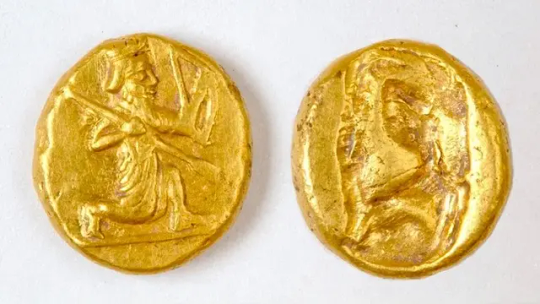
A Pot With Gold Coins Discovered in Ancient Greek City in Turkey
Archaeologists have discovered a pot of buried treasure overflowing with ancient Greek coins in Turkey.
The gold coins were found inside a room beneath a home in Notion, an ancient Greek city in western Turkey. They feature the figure of a kneeling archer, a design element used for the Persian daric, a gold coin issued by the Persian Empire. The currency was likely minted in Sardis, located 60 miles (97 kilometers) northeast of Notion, according to a statement from the University of Michigan.
Researchers think the mercenaries used the hoard as payment, but it's unclear why they buried it.
"The discovery of such a valuable find in a controlled archaeological excavation is very rare," Christopher Ratté, a professor of ancient Mediterranean art and archaeology at the University of Michigan and director of the Notion Archaeological Survey, the project that led to the discovery the coins, said in the statement. "No one ever buries a hoard of coins, especially precious metal coins, without intending to retrieve it. So only the gravest misfortune can explain the preservation of such a treasure."
A few stylistic clues indicate that the coins were struck sometime during the fifth century B.C. — a time stamp archaeologists are using to help uncover the sequence of events that led to the treasure's burial.

"This hoard will provide a firm date that can serve as an anchor to help fix the chronology of the (entire sequence of coins)," Ratté said. "According to the Greek historian Xenophon, a single daric was equivalent to a soldier's pay for one month."
In the past few years, the site has been a hotbed for artifact finds, including pottery fragments, also from the fifth century B.C., hidden "in earlier walls incorporated into the foundations of the house," which dates to the Hellenistic period, according to the statement.
The Hellenistic period occurred after the death of Alexander the Great in 323 B.C. and lasted until the conquest of the final Hellenistic kingdom by Rome in 31 B.C. During the sixth century B.C., Notion was incorporated into the Persian Empire along with other Greek cities. In the early fifth century B.C., it was freed from Persian rule for a time, only to be reintegrated into the empire during the fourth century B.C., according to the statement.
Between 430 and 427 B.C., a group of Persian sympathizers, as well as Greek and "barbarian" mercenaries, occupied Notion. During that time, the Athenian general Paches killed pro-Persian mercenaries, prompting Persian sympathizers to be expelled from the city as the Athenians took control, according to the statement.
Ratté said that these events could have led to the burial and eventual loss of the hoard.
By Jennifer Nalewicki.
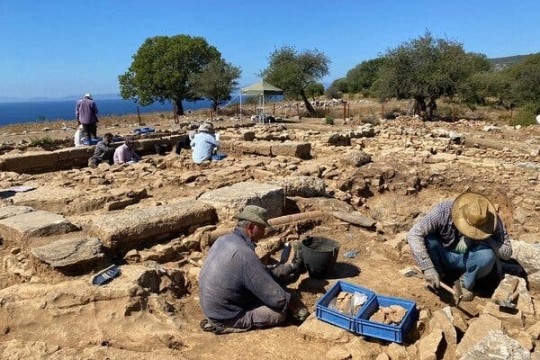
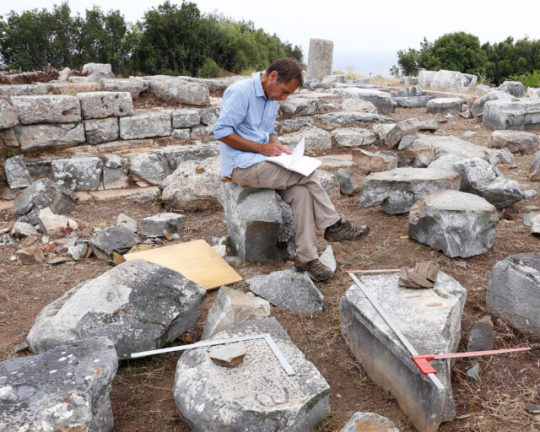
#A Pot With Gold Coins Discovered in Ancient Greek City in Turkey#Notion#gold#coins#collectable coins#ancient artifacts#archeology#archeolgst#history#history news#ancient history#ancient culture#ancient civilizations#persian empire#greek history
236 notes
·
View notes